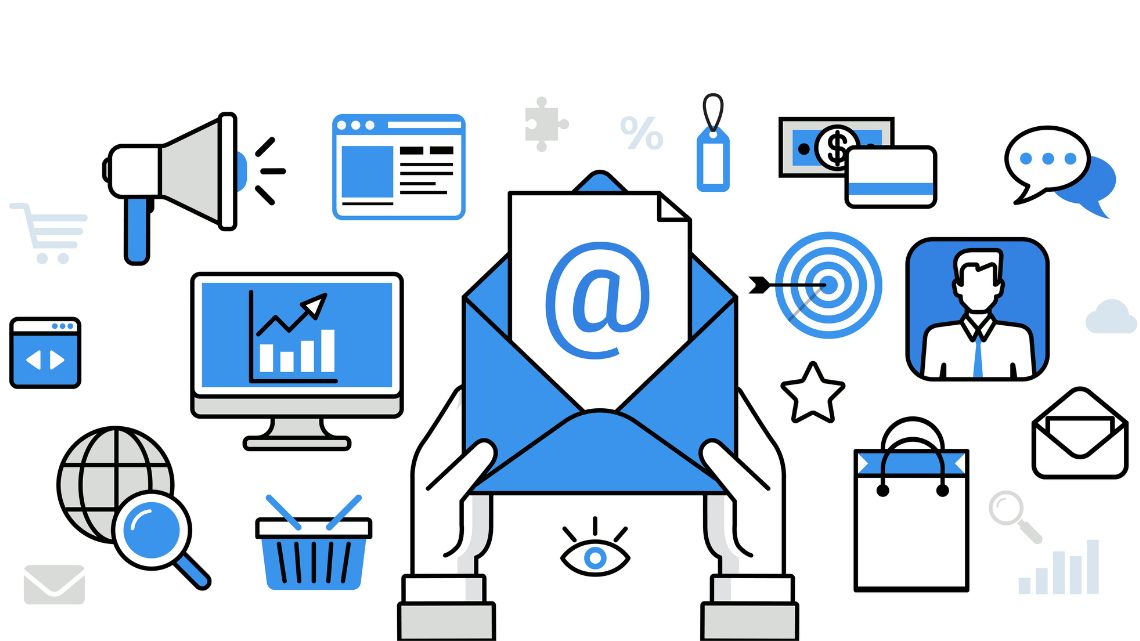
Marketing is essential for businesses to drive sales and increase their customer base. Email marketing uses email to communicate with the target customers for promotion. Email marketing also extends to direct communication, as companies send messages to address customer inquiries and concerns.
Companies use multiple approaches to develop relationships with customers via digital channels, and they must find easy and cost-effective methods. Email marketing is useful because of its expansive reach, ease of implementation, and higher return values.
This blog explains what email marketing is, different types of emails, their benefits, and strategies.
What Is Email Marketing?
Email marketing is a digital marketing strategy that utilizes emails for communication with its target customers. It is effective to market services, gain customer relationships, or provide relevant information about the business. The goal of email marketing is to promote a business by engaging a list of subscribers through email to increase sales and drive customer loyalty. It offers greater value in a cost-effective manner.
Types of Email Marketing
- Informational emails
These emails are crafted for the purpose of notifying your target audience and better understanding your brand. These emails can be newsletters, e-books, welcome emails, etc. This is the direct marketing approach to send promotional emails and updates for higher brand visibility.
- Transactional Emails
A transactional email is a message sent to a prospect after a commercial purchase or particular action initiated by that customer, like a follow-up, an e-commerce purchase, feedback, a password reset request, etc.
- Newsletters
Newsletters are among the most popular forms of marketing growth emails. An email newsletter is an email sent to subscribers to ensure to provide them with regular updates and offers about the business. You can send newsletters weekly or monthly, depending on your industry.
- Promotional emails
Promotional emails are about marketing a new product or launch, or to promote new or upcoming sales offers, deals, exclusive member content, etc, to your customers. Promotional emails have a clear call-to-action, with the specific aim of driving awareness to increase sales and revenue.
- Drip campaigns
Drip campaigns are a continuous number of emails sent automatically to target customers based on users’ triggers. You can create this using your email marketing tool, and it can automate this task for triggers when configuring your drip campaign. Customers on perform this specific action get a series of emails.
- Seasonal
Seasonal emails are specific messages sent on special occasions, like holiday time, to promote seasonal products or services. Black Friday, summer essentials, the reopening of school, and other recurring seasonal events are all great opportunities to let people know your offerings that help them.
Benefits of Email Marketing
- The great thing about email campaigns is that they are easy to implement. Email marketing software and resources can help you upload subscriber information, segment email content, etc.
- Email marketing is a powerful tool for launching a brand-new sale or offer. Customers can also receive targeted coupons that could help increase customer conversions.
- Email marketing is a useful strategy for lead generation, customer retention, lead conversion, etc. It allows you to build long-term relationships with the customer while growing customer loyalty.
- A brand’s recognition comes from its visual and value identifiers. Good email marketing provides the targeted customer with valuable content.
- Companies will use email automations to scale their marketing efforts. While email automation does take effort upfront, brands can then deploy those emails and hit scale.
- Brands will use dumped cart emails to remind customers of their incomplete sale process. Re-engagement emails will help restore your leads.
Strategies for Email Marketing Success
Personalization
Personalization for emails includes using customer data to create specific messages. While noticing to smallest of details while sharing the value makes the customer feel good. This can go a long way for any brand trying to build a committed customer bond.
Segment your audience
Segmentation of audiences by brands helps to create bespoke messaging for certain audiences and deliver the relevant messaging to their target customers. Email segmentation helps brands improve performance while also enabling more customer conversions.
Improve email delivery
Deliverability is the approach to sending email to a customer’s inbox. It helps accurately show in the inbox and stand out among other spam emails. However, if they fail to do so, emails are present in spam, and even worse, can get blocked by their ISP or other mechanisms.
Perform A/B testing
A/B testing helps to analyze performance data for subject lines, call to action, etc. Additionally, on a more frequent basis, review additional data points such as open rate or click-through rate. Understand the accuracy of email formats and then later manage email strategy for successful campaigns.
Automate email campaigns
Once you’ve outlined your email marketing plan, consider automation, data tracking, performance, etc. Software also offers options to send confirmation and welcome emails automatically. Using email automation services allows you to perform tasks quickly while offering a personal experience for customers.
Visit APAC Business Standard for more blogs.
Conclusion
Email marketing campaigns are effective ways to promote a brand’s new product line, share discounts with loyal followers. Email subscribers also get updates on the latest developments or even promote new launches. Thus, email marketing can increase your business and provide excellent customer engagement.
For Connect with Us:
About Us: https://about.me/apacbusinessstandard/
Pinterest: https://in.pinterest.com/apacbusinessstandard/
X (Twitter): https://x.com/Apac_b_standard
linkedin: https://www.linkedin.com/company/apac-business-standard/
Facebook: https://www.facebook.com/ApacBusinessStandard
Instagram: https://www.instagram.com/apacbusinessstandard/
Medium: https://medium.com/@apacbusinessstandard
BlogSpot: https://apacbusinessstandard.blogspot.com/
